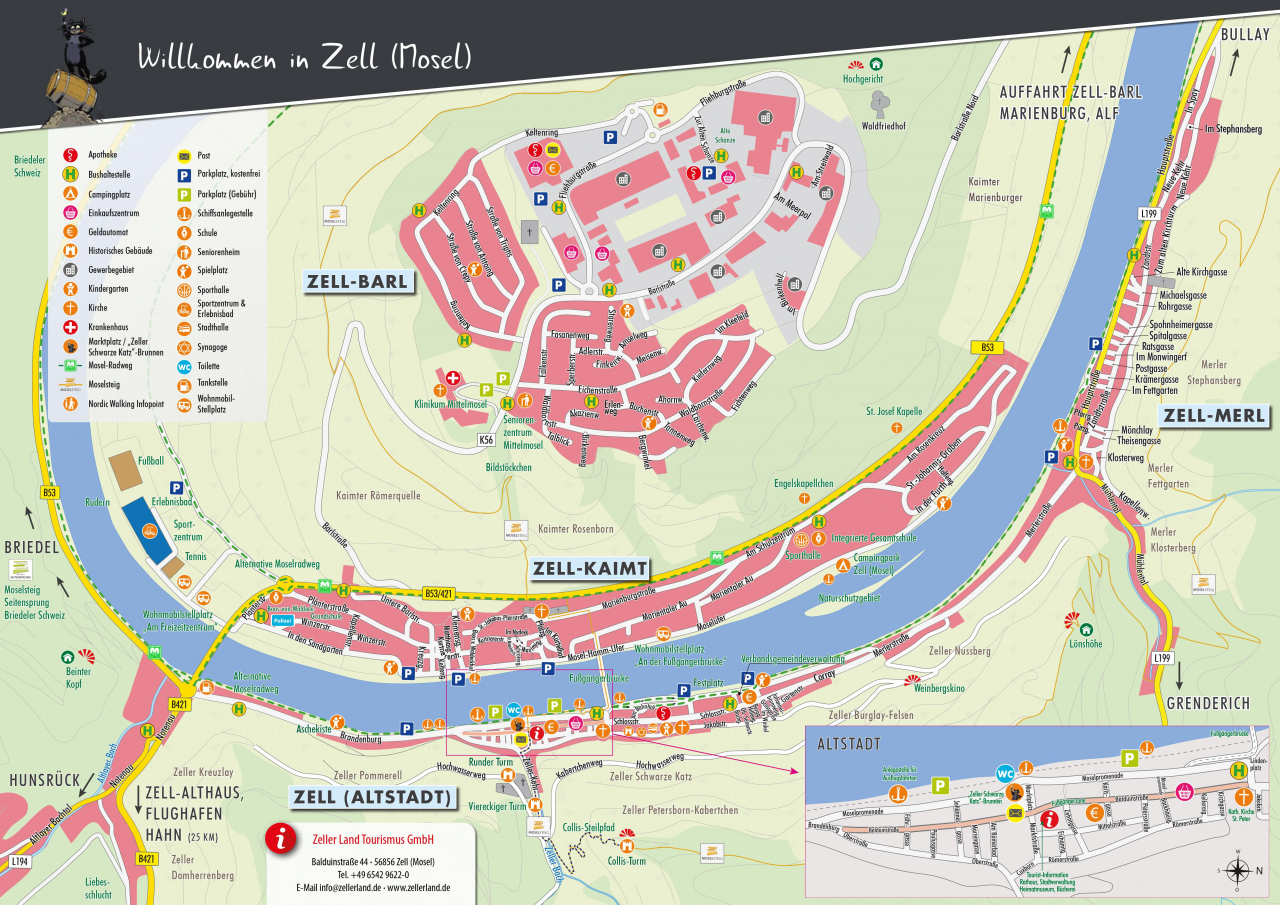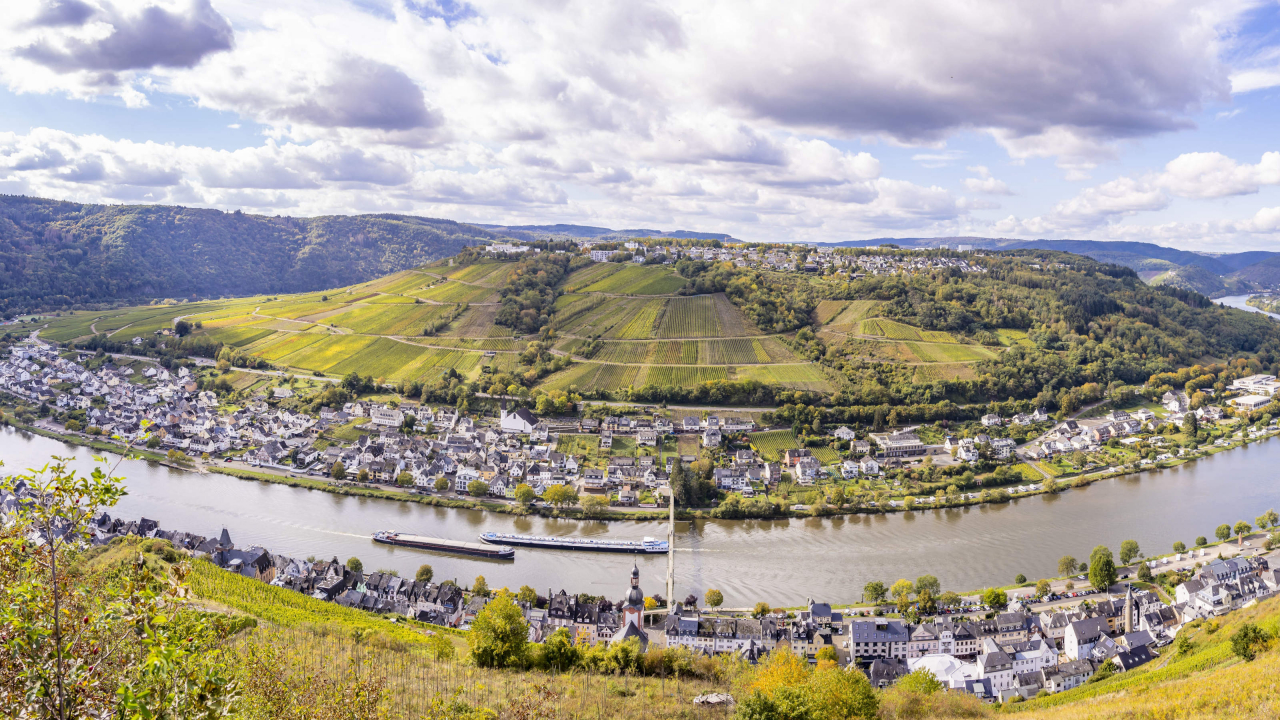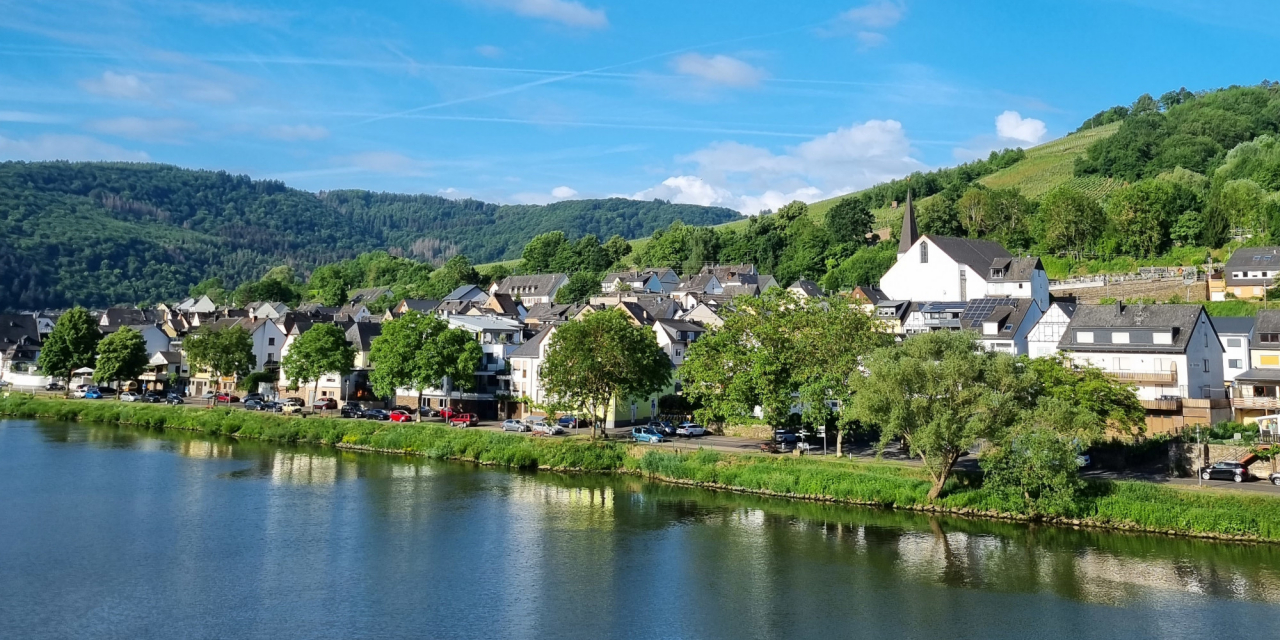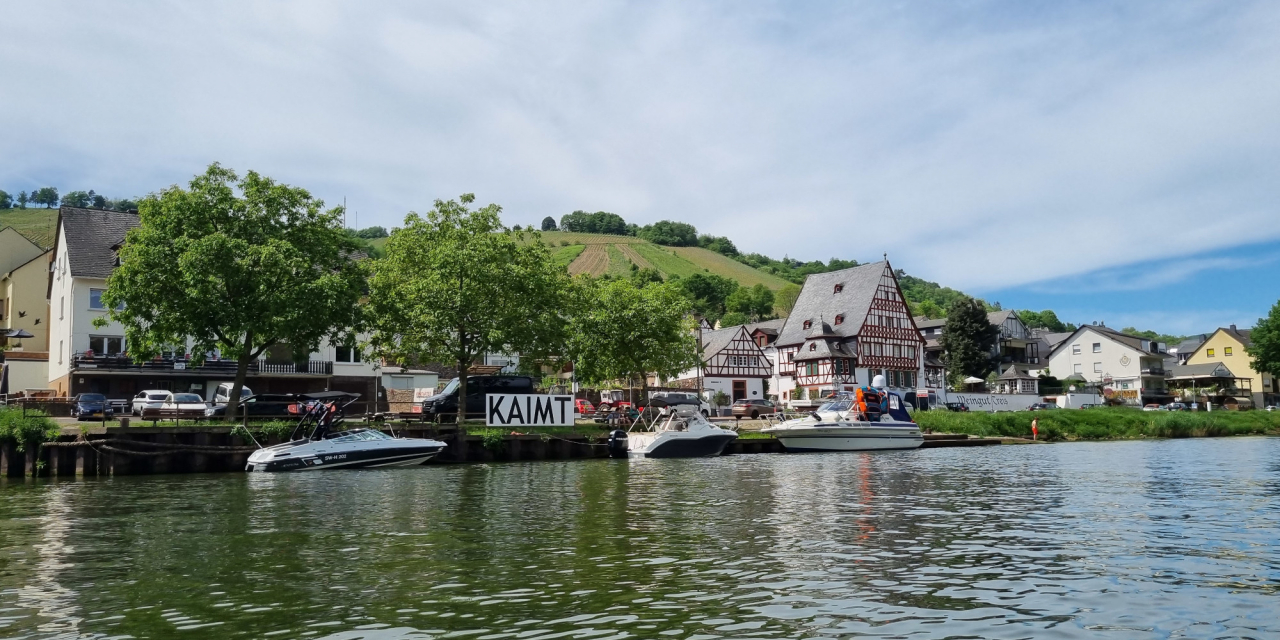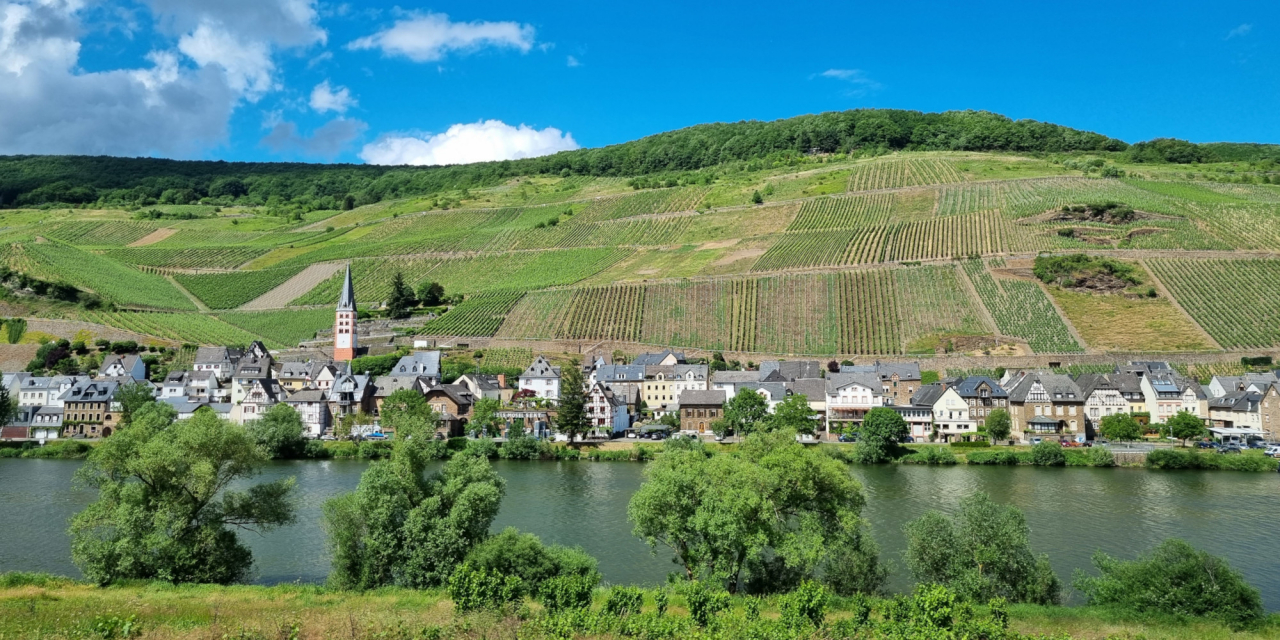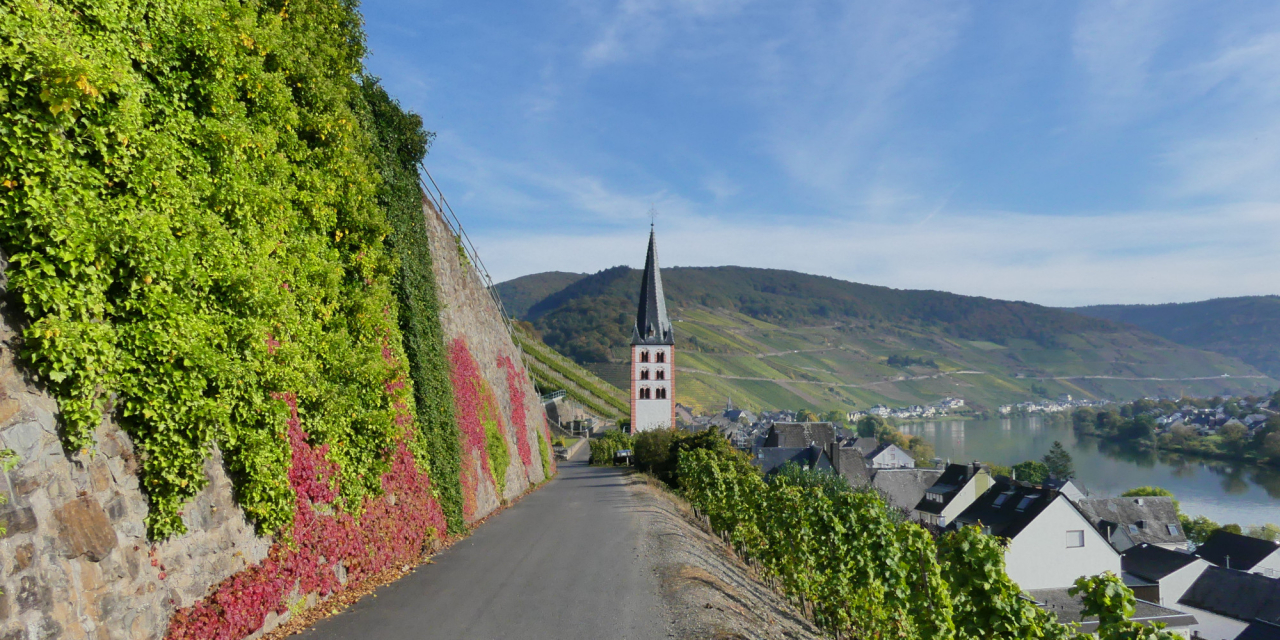Core town of Zell
The wine town of Zell has always been believed to have been founded by the Romans, although there were no concrete building remains in the town center to prove this. It was not until 1978 that extensive finds were made during sewerage work, which showed that Zell had already been inhabited in Roman times. The remains of a bathing facility were discovered, which - as was common at the time - was equipped with hypocaust heating. The bathing building had dimensions of more than 10 x 20 m and was located in the area of Oberstraße, Käsgasse and Mariengasse.
In the same year, a longer stretch of Roman road with traces of a settlement was found only 150 m away. There was an important connection between the Roman main roads Trier-Mainz and Trier-Andernach, which led from Wittlich to Simmern and crossed the Moselle between Zell and Kaimt on a ford. Zell came into being as a Roman road station with warehouses (“cellae”), possibly also with a harbour. This could be proved by the excavations in 1978.
Zell had already received town rights in 1222, and in 1229 the town wall with its three gates was completed. In 1532, while defending Trier against the attacking forces of Franz von Sickingen, 300 soldiers from Zeller Hamm made a name for themselves due to their special bravery. This is how the saying "He staiht ferm (firm), like en Celler from the Hamm!" came into being in the dialect. Elector Richard von Greiffenklau thanked the people of Zell by moving the seat of the Trier office for the area from Arras Castle to Zell and having the Zell Castle built from 1535 to 1543, which is still one of the most attractive buildings in the city today. The door of the former synagogue of the Jewish community in Zell can be found at the back of the palace on Jakobstraße.
Fires in 1848 and 1857 destroyed a large part of the old structure. Zell was then rebuilt with widened streets and therefore today looks more "urban" than most Moselle towns. Among other things, the "Caspary House" in Balduinstraße was preserved at that time - an interesting Gothic building that was built in 1515 for the Electoral Trier magistrate Johann von Senheim. The parish church of St. Peter and Paul from 1786 also survived the fire disaster.
Two towers in particular have survived from the medieval city fortifications: the "square tower" in the Zeller Bachtal and the "round tower" at the cemetery above the city. The latter is a landmark of the wine town that can be seen from afar and should not be missing from any panoramic photo of Zell. The focal point of the town is the small market square, which connects Balduinstrasse, Zell's main shopping street, with the green spaces along the riverbank. The trademark of the Zeller wines, the "Zeller Schwarze Katz", stands on a fountain here. Today, delicious wine is regularly served at the newly designed market square, a weekly market is held and many a festival is celebrated.

